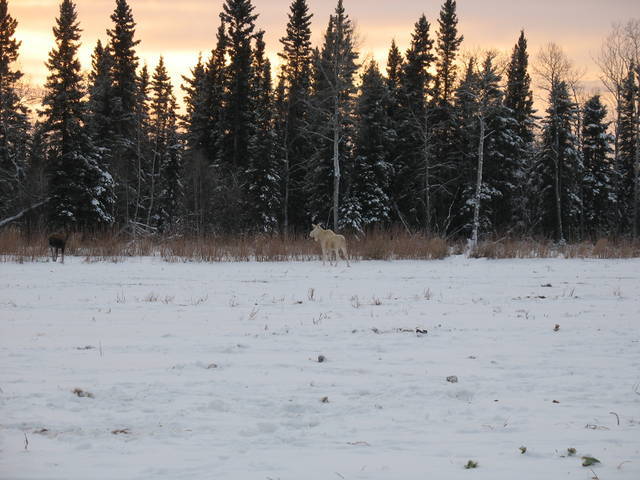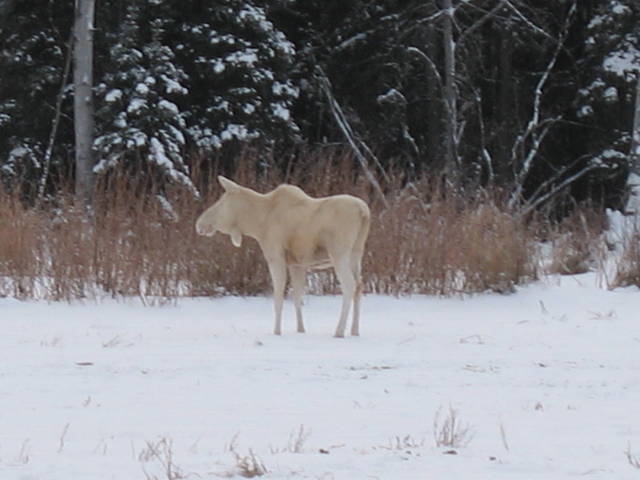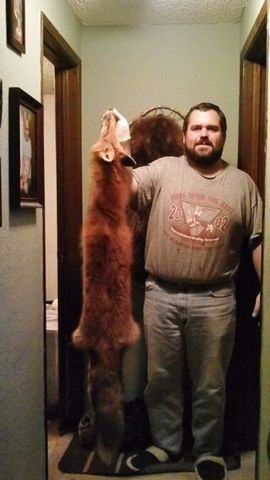Article in the DNM on the fur handling class put on by ATA and Alaska Raw Fur.
-TJ Fur Handling Class FAIRBANKS — Crowded into a small room with dried wolf, lynx and fox skins hanging behind them, a dozen trappers sat in a semi-circle of folding chairs watching Marty Middelstadt operate.
They looked on intently as Middlestadt, wearing a long, black, leather apron, blue surgical gloves and glasses, made his first incision.
The patient, in this case, was a dead marten hanging by one back foot from a rope attached to a hook in the ceiling.
“For the fur market, they don’t buy feet, so you start with the ankle and come up the side of the leg,” Middelstadt said as he gently cut around the ankle with a small paring knife and then began making a cut down the marten’s leg. “I like to have something really sharp so you don’t have to push very hard and end up cutting holes (in the fur).”
That was a line that Middelstadt repeated several times during a fur-handling workshop sponsored by the Alaska Trappers Association on Saturday at Arctic Raw Fur Co.
The all-day clinic was designed to teach trappers how to handle fur from the time it is taken from a trap until it is presented to a buyer. Middelstadt, who has been trapping and skinning animals for 40 years, along with Bill Wivoda, owner of Arctic Raw Fur Co., served as instructors for the seven-hour workshop.
Middelstadt and Wivoda first told the class to treat the animals they trap or hunt with respect and to use as much of an animal as possible.
“If you’re going to kill something, treat it correctly and don’t waste it,” Wivoda said.
From there, Middelstadt and Wivoda went on to teach trappers the finer points of skinning, fleshing, stretching and drying the hides of beaver, marten, fox, lynx and wolves.
Trappers learned the proper ways to split and turn the lips and ears on a wolf, skin the feet of a wolf and lynx, and remove the tail of a marten without pulling it off, among other things.
Professional advice
Imagine Michael Jordan teaching you how to dunk a basketball. Or Wayne Gretzky showing you to put the puck in the net.
That’s what it was like for the trappers who gathered in Wivoda’s small shop on D Street for Saturday’s workshop.
Between them, Middelstadt and Wivoda have a combined 60 years in the fur business, both as trappers, buyers and skinners.
“These guys are the pros,” Dan Nelson, a recreational trapper from Fairbanks, said.
The 35-year-old Nelson, who has trapped for six years, attended Saturday’s workshop hoping to pick up some pointers, specifically about marten.
“I didn’t know a hill of beans about marten, and I’m going to do some marten trapping this year, so it was good timing,” he said.
While he has attended both the ATA’s wolf trapping and general trapping schools, Nelson said, those workshops focused more on catching animals than skinning them.
“I think I know the basics, but it’s nice to hear it from guys who have been doing it their whole life,” he said.
Shannon Epps, another recreational trapper at the clinic, said the same thing.
“I want to learn how to do stuff the correct way,” he said. “These guys are showing you the correct way to do it.”
Epps, 44, was interested in the tools Middelstadt and Wivoda use to flesh and stretch hides, as well as how to skin a wolf so he’ll be ready when he catches his first one.
Saturday’s workshop marked the first time the ATA has put on a fur-handling clinic for the public. Randy Zarnke, who helped organize the workshop, said it was the result of a one-hour presentation that Middelstadt and Wivoda put on during an ATA meeting last year.
“We got good feedback so we sensed there would be interest,” Zarnke said.
The cost of the workshop was $75, but Zarnke said those who attended will recoup that with the tricks they learned.
Neither Middelstadt or Wivoda worried about sharing the secrets they’ve learned during 40 years of trapping and skinning.
“I hope to pass on what I’ve learned to people who want to learn it, so they can take care of the animals they hunt or trap,” Middelstadt said. “I think people are hungry to learn how to do it. There’s not much out there as far as books or videos.”
Presentation is key
The first half of Saturday’s workshop focused on beaver and marten, the latter of which is “the bread and butter of trapping in Alaska,” Wivoda said.
“Our marten are the best in the world,” he said, holding a shiny, reddish-brown marten hide.
Wivoda went over the three different size classes of marten hides, which are based on a measurement taken from the tip of the nose to the base of the tail when stretched on a board. The biggest skins, those measuring 23 1/2 inches and up, are worth $85, he said. Pelts that measure 21 1/2 to 23 inches pay $60 and skins 19 1/2 inches to 21 inches are worth $40.
“You see the incentive for staying in that extra, extra large group,” Wivoda said, referring to a list of sizes he written on a white board. “Size is everything with a marten.”
That’s why it’s critical when skinning a marten to leave as much hair on the back as possible, Wivoda said.
“A half-inch might be a $20 bill,” Wivoda said.
Middelstadt demonstrated the proper way to stretch, flesh and pin a marten hide on a stretching board. After getting the skin centered on the board, Middelstadt ran his fingers tightly down the board.
“We’re not trying to stretch it into a bigger size,” Middelstadt said. “We’re trying to get it taut so it will dry.
“Tight is what makes it dry faster,” he said.
Drying marten on a wider stretching board also makes them look bigger and fluffier, Wivoda said.
“Presentation is everything when you try to sell them,” he said.
Damage control
While most of the workshop focused on actual fur handling, Middelstadt and Wivoda also provided some tips on things trappers can do in the field to prevent damage and save time.
For example, they said to use dry, not green, spruce poles for marten sets to prevent sticky sap from getting into a marten’s fur, which then must be cleaned.
Marten pole sets should be high enough to keep dead marten off the ground after they are caught, they said.
“The closer they get to the ground, the better chance there is for a squirrel or mouse to come along and tear up the fur,” Wivoda said.
Frozen marten can be wrapped individually in old sleeping bags so they don’t get damaged by traps, axes or other marten bouncing in a sled or trapping box behind a snowmachine.
“A frozen marten has got sharp claws,” Wivoda said. “Those claws can tear little pieces of fur out when they get bouncing around.”
Thawing frozen animals too close to a heat source will cause the hair to “slip,” or fall out.
“It’s better to let them thaw slowly for 24 hours at 45 or 50 degrees than to put it in front of some heat source at 90 degrees and try to thaw it in two hours,” Middelstadt said.
Wivoda held up a marten skin and showed how he could pull hair out where it thawed too quickly next to a heater.
“That’s a damaged skin,” Wivoda said. “A damaged skin is worth approximately half of what an undamaged skin is. That’s one of the reasons we’re holding this class. So we can prevent this kind of stuff.”








